

Great Ouse Branch
Ouse News - Summer 2025
covering the Great Ouse and tributaries
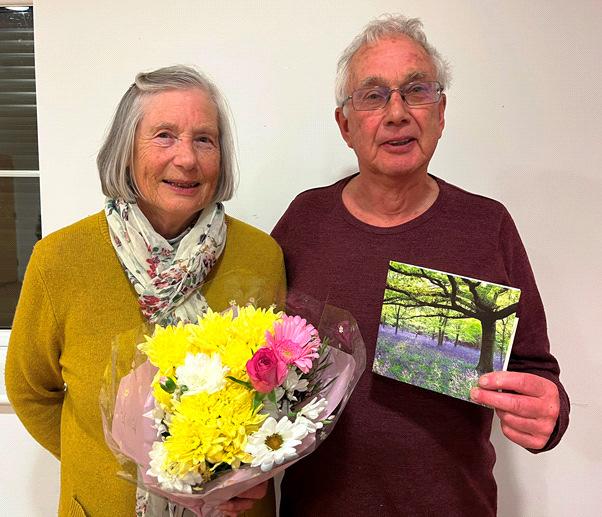
Campaigning for the conservation, use, maintenance, restoration and development of the Inland Waterways.
The views expressed in this publication are not necessarily those of the Inland Waterways Association or of the Great Ouse Branch. They are, however, published as being of interest to our members and readers.
Great Ouse Branch Committee:
Chairman:
KeithAlderton
Tel : 01366 727236
Secretary:
John Hodgson
Tel : 01234 344884
Treasurer:
Enid Hodgson
Tel : 01234 344884
Ouse News Editor:
CaroleAlderton
Tel : 01366 727236
Membership Officer
Stephen Foote
Tel: 01763 838936
Member:
RobinAdams
Tel: 01223 862026


Do you have a few hours to spare? We need your help! We are a small, friendly group and desperately need more committee members to help us organise meetings and events. One committee member has just retired (Peter Webb) after 29 years! That leaves just 6 of us!!
Please contact the Chairman.
Ouse News Page 3
Branch News
WinterMeetingsareat8.00 pm at the North Lodge Pavilion, North Lodge Park, Milton, CB24 6UD.
THURSDAY 23RD OCTOBER 2025
Imogen Radford will be presenting a talk entitled ‘Tales from the RiverRecreation and Industry along the Brecks Rivers and Fen-Edge’.
THURSDAY 27TH NOVEMBER 2025
Paul Fuller (local wildlife photographer), will be giving us an illustrated talk on ‘Birds of the Wetlands and Waterways’.
THURSDAY 26TH FEBRUARY 2026
To be confirmed.
THURSDAY 26TH MARCH 2026
This will be ourAGM, followed with an update by a River Manager from the EnvironmentAgency.
Welcome to our latest member and we hope to
welcome more new members soon.
Patrick Forbes Conservators of the River Cam
If anyone is reading this newsletter and would like to become a member, please contact Stephen Foote, our Membership Officer, on 01763 838936.
Chairman’s Corner
After two years of interruption to navigation due to ‘strong stream’ restrictions we have now entered a period of drought conditions. I have not heard of any problems with low water levels yet, but watch this space! Locally, we have so far managed to avoid the violent rain storms that have caused problems elsewhere.At least you don’t get bored with the weather in this country!
I am pleased to note that some of our local navigations are at long last getting back to some degree of normal operating condition and are no longer cut off from the rest of the country. Salters Lode lock is now up and running and there is talk of Baits Bite lock on the River Cam being re-opened by the end ofAugust. However, losing the best part of a year’s income has dealt a death blow to the fleet of hire cruisers operated by Bridge Boatyard in Ely, all of which have been sold off to private buyers.
Members of the IWA-lead Fund British Waterways Campaign are still battling away raising awareness of the dire state of many of the Nation’s waterways due to lack of financial resources.
Regrettably, the current governmental funding crisis is making this campaign even more challenging. However, this has not prevented the EAfrom embarking on a £1 million project (partly funded by a grant from the National Lottery Heritage Fund) to enable the free flow of native fish and eels along the River Lark in Suffolk. The work includes the removal of two weirs and construction of a ‘rip rap rock ramp’fish pass at Turf lock in Mildenhall. This is no doubt a worthy cause, but why choose to do this work now at a lock that has been derelict for many decades when there are insufficient funds to repair supposedly functioning locks?
We have now been boatless for the past year, having finally decided to hang up our windlasses and sell Watermist last spring. I must say that on a nice summer evening we still wish we were moored up at a pleasant spot on the riverbank, sitting on the back deck enjoying a glass or two.
I look forward to seeing you all at our evening meeting in October when Imogen Radford will be presenting ‘Tales from the River - Recreation & Industry along the Brecks Rivers & Fen Edge’.
I hope that you have a great summer and make sure you enjoy your boating whilst you can.
Keith Alderton
Branch AGM 2025
The Branch AGM was held as per normal in March, with 13 members in attendance in addition to the committee. It was noted that Peter Webb was retiring from the committee after 29 years’ service. The Chairman thanked Peter for his contribution over the years and also thanked his wife Jean for assisting Peter with the teas at meetings. Peter and Jean were presented with a voucher for a meal at their favourite restaurant and Jean with a bouquet of flowers.
Stephen Foote agreed to take over the role of Membership Officer from Peter.
Lee Cobbold, EATeam leader gave the EA’s annual report to branch members. His report was delivered in three sections, the good, the bad and the ugly i.e:
The Good -
£117k had been recovered due to improved licence enforcement and compliance. A security upgrade had been completed at Denver Lock. A tenant had been found for the JenynsArms at Denver. Lee now had an expanded team of seven and as a result had reduced expenditure on contractors.
The Bad –
Strong Stream Advice warnings had been in force until May. Brandon Lock had been reversed to ease flooding. The Denver/Salters Lode crossing had been closed due to silting. Many trees had been brought down by the flooding and had yet to be cleared. Increased numbers of live aboard boats was causing societal problems.
The Ugly –
The failure of Jesus and Bates Bite locks. The lack of finance to de-silt
Brandon Lock. Over-staying at 48-hour moorings. Navigation fees increased by 9%.
Lee reported that they had received 1700 responses to their consultation exercise. However, financial difficulties made it necessary to implement the 9% increase in fees immediately.
Alderton

Keith

Waterways Recovery Group
Back in the spring, we were reminded that we had unused funds languishing in our branch bank account that could be put to good use. We therefore responded to a request for help from the Waterways Recovery Group BITM (Bit In The Middle) section and made a £1,000 contribution towards the cost of a replacement work van. (You may recall that we made a similar contribution to WRG several years ago.)
We have subsequently received the following thank you note :
‘ On behalf of WRG BITM I thank you for your generosity and support for us. We are an eclectic group of people who share a passion and interest in restoring canals. The van is essential to our work, enabling us to transport our tools and our catering kit to the various worksites and canals we support.
You may be aware that BITM stands for ‘the bit in the middle’, which is essentially the area we cover. However, we are always on the lookout for new opportunities and so if you have a project that you think we might be able to help with, please do not hesitate to contact the Chairman to discuss.
Thank you once again for your kindness.
Liz Upton – BITM Treasurer.’
I am glad that we were able to help and that our support was much appreciated.
Keith Alderton
A Trip on the Lancaster Canal
I once stayed in Lancaster for a week in order to explore the Lancaster Canal and surrounding area. Lancaster was once a busy port and was considered to be more important than Liverpool at the time. The City’s past explains the presence of a maritime museum near the river.
I took a public boat trip on the canal from the city centre over the Lune Aqueduct and back. The aqueduct carries the Lancaster Canal over the River Lune. This aqueduct is of very solid construction and I was quite happy walking over it, which is more than I can say for the Pontcysyllte!
The canal originally ran from the sea at Glasson Dock to Kendal in the Lake District, but is now only navigable as far as Tewitfield.
The next day I walked along the canal as far as Carnforth. The canal runs parallel with the sea coast at one point. At Carnforth I visited the depot for some of the mainline steam locomotives. There is a railway museum there, but the steam locomotives can be seen only on open days.
The following day I went on the bus to Glasson Docks where there is a very old basin for boats. In the past, small coasters would have gone in there to transfer their cargoes to and from canal barges. The Lancaster Canal is a wide canal and so barges would have been used rather than narrowboats. Today, larger coasters call in at a more modern port.
I was lucky and seemed to have very good weather for this holiday!
Robin Adams
Reflections on a recent short trip on the Leeds and Liverpool Canal
I have always wanted to explore some of the northern waterways and an opportunity arose recently for me to join Pride of York, a sixty foot narrowboat, as it made its way from Barnoldswick towards the Yorkshire boundary. The stress of driving through Bradford melted away as I met the boat and we set off down a short flight of locks meandering towards the River Aire valley west of Skipton. We went ashore for a walk round East Marton. Sadly the pub there has fallen victim to closure – usual reasons for the decline of what must have been a bustling centre of the community. Stopping at Gargrave to stock up at the conveniently located Co-op, we also found time for a pint at the popular village local, The Masons Arms.
Skipton was at its liveliest with a Saturday market in full swing and the pubs erupted when Leeds United scored a late winner to secure the Championship denying rivals Burnley the title. Steel dayboats skittered around haphazardly and the swing bridges added to the general mayhem on the canal.
Life settled down to such an extent that when we moored later in the afternoon, we were able to watch the conclusion of a competitive local league cricket match at Low Bradley enjoying a pint at The Slaters Arms to commiserate with the locals in their defeat.
On past Farnhill Woods, mesmerisingly beautiful in bluebell season, to Kildwick, theAire Valley is wide and mainly arable dotted with villages each with their own mill. Kildwick is interesting because it was on the turnpike road where it crosses the Aire on its way up to Settle. As a result you can clearly distinguish the road and village layout pre and post the construction of the canal.
By now we were on our approach to the Bingley Five Rise and then the Three Rise. They come on you somewhat suddenly and with little fanfare.
Having booked ourselves a descent the following morning, we repaired to a wonderful Indian/Burmese restaurant close to the canal. We were fortunate to follow the historic Kennet short boat built to the dimensions of the canal (60’by 14’) to transport goods.An inspection revealed the large hold in contrast to the minute accommodation accessed by a hatch in the foredeck.
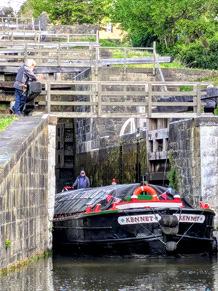
The valley continues towards Leeds in its own green corridor hardly touched by modern life to Saltaire, whose impressive buildings rise up straight from the canal. Thomas Salt certainly had a vision and the whole site deserves its Unesco Heritage Status. By now we were getting a bit fed up with the swing bridges over the canal but the worst was to come. The busier ones were electronically operated but the worst was half and half. It had lights etc but they seem to have run out of money and didn’t install a powered swing mechanism. Instead you had to go through a convoluted process to swing the bridge using your key on both sides of the canal. One person working locally is even deputed to keep an eye on passing boats so to ensure the bridge is opened and closed efficiently to allow access to their business!
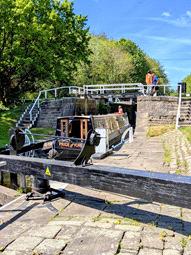
The staircases of locks come more frequently but fortunately there were volunteers on hand to help out and give us the low down on local facilities. Including a tiny ale house recently converted from a closed Post Office which was packed with eager quizzers. Also recommended was a fine Turkish restaurant in Rodley.
Ouse News Page 12
We reached Kirkstall and visited theAbbey. This is an interesting ruin, set as it is on the banks of our now familiar companion, the RiverAire.
We then received the bad news that water levels were low and so we had to adjust our plans such that the boat could leave the L&L before it was closed.
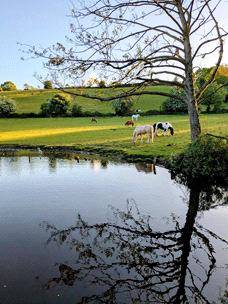

I believe the canal has always suffered from low water. Indeed on driving past the Foulridge reservoirs not only could I see that they weren’t very big, they were also very low. An unfortunate end to a lovely trip. In my ignorance, I had anticipated lots of redundant industrial heritage, sunken shopping trolleys and the like but instead the valley is verdant, full of widlife and welcoming locals.
Do take time to visit the L&L. You will love it. AnthonyMarris
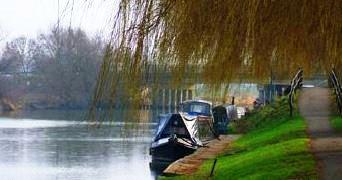
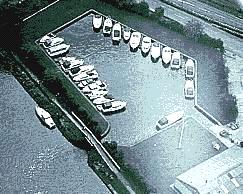
A Journey Through Time
At our Milton Lodge meeting on Thursday 27th February 2025, we were given an informative talk by Liz Davis titled “A Journey Through Time”, an illustrated talk about the way the River Great Ouse had affected the development of St Neots.
Liz was the curator of St Neots Museum for 11 years before retiring to spend more time researching and writing about local history. During her time at the museum, she was able to add many items to the museum’s collections. From flint arrowheads, found where the St Neots Tesco now stands, to the Kimbolton IronAge coin hoard of 68 gold stater coins.
Liz began by showing how we were once connected to Europe and how the landmasses had changed and how the glaciers had changed the landscape and the course of the River Great Ouse many times.
In Neolithic times woolly mammoths roamed the country, and their fossilised tusks have been found at Paxton Pits near St Neots.
The Stone Age people were attracted to rivers for their water supply, and they also believed spirits lived there. Many artefacts have been found in the river, presumably gifts to the gods.
In the Bronze Age the river and surrounding area became the centre for trade, fishing and travel. Log boats have been uncovered in many settlements, including Flag Fen and Must Farm.
When the Romans arrived in 43AD, several settlements were built; one villa with underfloor heating was discovered in Eynesbury. Many Roman coins have been found in the area and 3 stone coffins near theA1 at Eaton Socon.
The Vikings were the next to arrive (circa 886AD). They built a base at Tempsford, planning to attack Bedford, but the localAnglo-Saxons foiled that attempt.
Ouse
At the site where Waitrose now stands, a monastery was founded in 974 AD. Relics of the Cornish St Neot were moved to the monastery in an attempt to attract pilgrims. As trade increased, a wooden bridge was built over the river, and that part of Eynesbury was renamed St Neots. The Priory was destroyed during the Dissolution of the Monasteries in the 16th century, and the relics of St Neot were lost.
The wooden bridge was replaced by one made of stone in 1640. The current bridge was built in 1963.
In the Georgian period, St Neots became an important trading centre, as the furthest inland port on the River Great Ouse from the sea. The arrival of the railways in 1850 led to its demise.
In the 1900s, basket making was big business, providing much employment. Unfortunately, when a spring was discovered, it was hoped that it would make St Neots a spa town, but the water tasted foul, so the idea was dropped.
The river has caused much flooding in St Neots. We were shown a photo from 1908 which showed the Market Square and surrounding shops underwater. 1947 was another year when there was bad flooding. In “The Weeping Ash” Wetherspoons pub almost opposite St Neots Museum, there are many framed pictures of St Neots past history. Jean & I went for coffee one day in 2018. We happened to be sitting under a picture showing a punt being punted along the flooded streets. An elderly lady sitting next to us said the man punting was her grandfather!
Swimming for pleasure took off, and bathing huts were provided at both ends of the town. This ended due to “non swimming” activities and the increase in the sewage flowing into the river.
When the river froze, skating was a popular activity. Fishing and rowing have always been popular and continue to this day. The regatta and dragon boat racing events are still held.
Liz’s talk was very informative and interesting, showing how influencing the River Great Ouse had been in the formation of St Neots.
St Neots Museum is housed in the town’s former Victorian police station and magistrates court. It has local history collections covering the town’s rich past, including a display about James Toller, the Eynesbury Giant, a resident from the 18th century who measured over 8 ft in height. There is also a gallery with temporary exhibitions by local artists and craftsmen.
Peter Webb
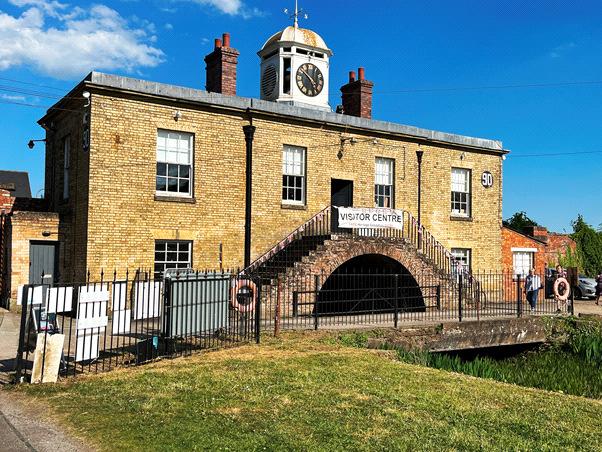
In May, members from the Great Ouse, Peterborough and Northampton branches enjoyed a fascinating visit to the Royal Ordnance Depot next to the Grand Union Canal at Weedon. There, we were welcomed by a band of enthusiastic local volunteers who not only provided a wealth of information throughout a comprehensive tour of the site, but also treated us to free tea and biscuits afterwards.
In the early 1800s during the Napoleonic Wars there was seen to be a serious threat of invasion. The government therefore decided that there was an urgent need to store vast amounts of weapons, military provisions and gunpowder at an accessible location as far from the coast as possible. Weedon, strategically placed at the centre of the Country, served by both Watling Street and the newly built Grand Junction Canal (later to become part of the Grand Union Canal) was selected as being the ideal spot.
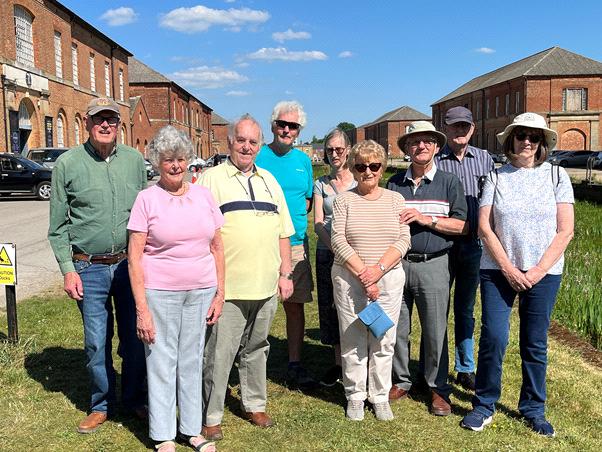
Visit to Royal Ordnance Depot

Work on the Depot began in 1804 with eight store houses and powder magazines being built together with a new cut providing direct access from the canal.Ahigh perimeter wall was completed ten years later. The site was eventually expanded to 20 acres with barracks, parade grounds, stabling for hundreds of horses, a hospital, a prison with 121 cells, a chapel and polo fields, all served by both internal narrow and standard-gauge railway networks.
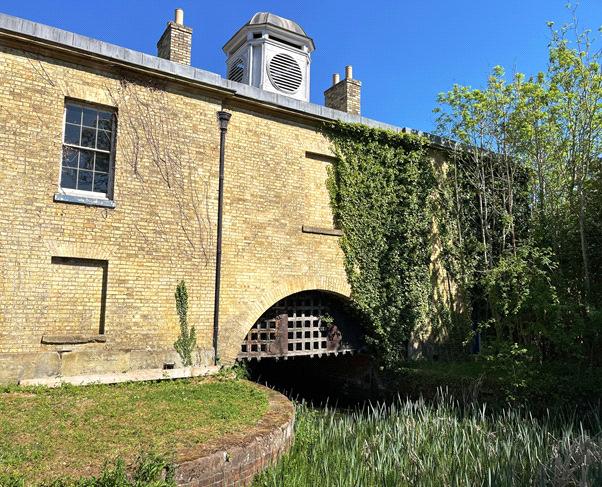
Gunpowder was originally transported by narrowboat from the Royal Gunpowder Mills atWalthamAbbey along the Lea Navigation and through the canal network, directly to the magazine building at the Depot. The magazine sometimes held as much as 1,000 tons of explosives. Three grand buildings, known as the Pavilion were built to accommodate the Governor and Principle Officers. These were later earmarked for use as a safe refuge for the Royal Family should the feared Napoleonic invasion actually take place.
The site was in constant military use until it closed 1965. Many of the original buildings are currently being used for industrial purposes by a multitude of diverse businesses. Re-using the buildings in this manner has helped preserve the site in near-original condition whilst leaving much of the infrastructure for us to see and admire today.
Unfortunately, the original cut from the Grand Junction Canal has been filledin to form a residential road. However, the straight section of canal within the site remains in water, book-ended by the original lodge buildings, each containing a defensive portcullis gate.
I would like to thank the Northampton branch for organising the visit and the volunteers of the Depot Visitor Centre for a most interesting day.
Keith Alderton
River News from the Environment Agency Lee Cobbold, Waterways Operations Team Leader (Great Ouse & Stour Waterways)
Anglian Waterways Spring Update: Ready for the 2025 Boating Season
As spring turns to summer, the EnvironmentAgency’sAnglian Waterways team is pleased to share highlights of recent work, key developments, and exciting plans for the 2025 boating season.
The new boating season started with some sunny weather and an open river despite a few squeaks here and there.
Listening to Our Community
We’ve been engaging with boaters, partners, and the public to shape our Navigation Plan for 2025, which focuses on:
· Safety for staff and customers
· Improving your experience on the water
· Making waterways sustainable for the future
· Securing more income towards a financially sustainable service
At events like the Crick Boat Show, our team met hundreds of visitors, answering questions and hearing your views. We also launched an exciting new interactive map feature, starting with the River Great Ouse—with more rivers to follow soon.

Financial Position
We’ve received £3.16 million in income for 2024/25—£120,000 more than forecasted. This positive result reflects improved fee collection and successful enforcement, helping us invest in safer, better waterways.
Sales of the Anglian Pass, which allows boaters to travel seamlessly across three navigation authorities, brought in £40,000, shared between us, the Middle Level Commissioners, and the Conservators of the River Cam.
We are in the early stages of collating the 2025/26 data and will let you have a bit more detail when we can.
Investing in Our Rivers
We completed a £5.85 million capital investment programme in 2024/ 25, with plans to expand this in the new financial year. Our review for 2025/26 is currently awaiting formal sign off and funding. Projects include lock refurbishments, tree works to improve sightlines, and urgent repairs.
One key project is a £700,000 contribution to the refurbishment of the St Ives Sluice, a vital structure on our network
Getting the Waterways Ready
Despite wet weather and strong flows delaying our winter maintenance, our teams have worked tirelessly to prepare for the season ahead.
‘ All 65 locks have been inspected and are ready (where open)
’ Safety equipment like lifebuoys and throw lines have been checked and replaced where needed
’ Our moorings have been cleaned and refreshed
’ Our operational craft have been serviced and are back on the water
‘Public Safety Risk Assessments are up to date and control measures in place. Scheduled Inspections remain on-going and are on-target to be completed in-line with expectations.
Some works continue into the season, including:
• De-silting downstream of Godmanchester and Hemingford Locks
• Ongoing tree work to manage safety and access
Tackling Challenges
While we’re proud of our progress, some challenges remain:
Updates
• Brandon Lock is currently closed due to mechanical faults, with siltation a complication near the 48-hour mooring. This situation is unlikely to be resolved in the current financial year due to available resources.
• St Ives Lock is operational following an early season temporary fix. The fix appears to be holding well. The planned closure to de-water and repair (when the parts are available) will hopefully be moved back into the low season, if the current lock performance is maintained.
• Downham Market 48-hr Mooring remains closed for public safety. We will re-open it as soon as we are able to. When the situation is resolved we look forward to welcoming boaters back onto the relief channel to enjoy all that stretch has to offer.
Safety Equipment
• We’ve seen an increase in vandalism to public safety equipment like life rings. We’re putting in new security measures and spreading water safety messages through our social media.
Enforcement and Water Safety
In 2024/25 our enforcement teams had a busy season, with:
• 964 boats were entered into our enforcement process, compared to 464 the previous year
• 8 boats removed using our legal powers
• £122,000 recovered in registration fees
We’re also addressing increasing numbers of unidentified boats, which don’t display a name or registration number.
As the new year 2025/26 begins, so far 76 boats (22 of which are unidentified) have started on enforcement process and 2 boats have been removed in June under our powers.
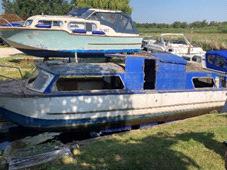
The enforcement team are progressing a high profile liveaboard case as a trial case. This would be the first liveaboard taken to court by the Environment Agency.
We’ve partnered with Cambridgeshire Fire and Rescue Service and Cambridgeshire ACRE to deliver water safety training to local volunteers, helping prevent accidents on our rivers.
Staff Changes
The Operations team has had a change with Warrick Hammond going on assignment to the Flood Resilience team in the London and North Herts region becoming a team leader on an initial 12-month assignment – we wish himwell.LindonWisehasbeenrecruitedtoprovideinitialcoverforWarrick’s role whilst our recruitment process plays itself out.
TheAnglian Waterways Leadership team had the pleasure of welcoming the new Deputy Director for Navigation, Bill Jephson to a recent strategy meeting. The session offered a valuable opportunity to reflect on the progress and challenges across the Anglian Waterways, and to explore the areas where Bill’s support and leadership will be especially impactful moving forward.

From Left to right: Paul Separovic (Operations – Lincoln and Northampton waterways), Jo Sinclair (Business Advisor), Stuart Garner (Enforcement), Alastair Windler (Asset Performance), Bill Jephson (Deputy Director for Navigation), Katherine Briscombe (Waterways Manager), Matt Yallop (Workforce), Nathan Arnold (Partnership, Development and Commercial) and Lee Cobbold (Operations – Great Ouse and Stour)
LookingAhead
We’re excited about what’s coming next, including:
• Supporting the Bedford–Milton Keynes Waterway Park, which could benefit from nearby investment like the proposed Universal Studios site
• Reopening key routes like Baits Bite Lock on the River Cam, improving navigation into Cambridge
• Continuing to engage with boaters, including groups like IWAand GOBA(Great Ouse BoatingAssociation), to ensure your voices are heard
Thank You From our lock engineers to enforcement teams and river inspectors, everyone atAnglian Waterways is working hard to keep the rivers open, safe, and enjoyable. We’re proud that over 99% of our rivers have remained open since the start of the high season, and we’ll keep doing everything we can to make your boating experience better. For the latest updates on river conditions, closures, and notices, visit our website or follow us on social media.
Here’s to a safe and enjoyable 2025 boating season!

The Inland Waterways Association is a non-profit distributing company limited by guarantee. Registered in England No 612245. Registered as a charity No 212342. Registered Office: 16B Chiltern Court, Asheridge Rd, Chesham, HP5 2PX. Phone No 01494 783453.
